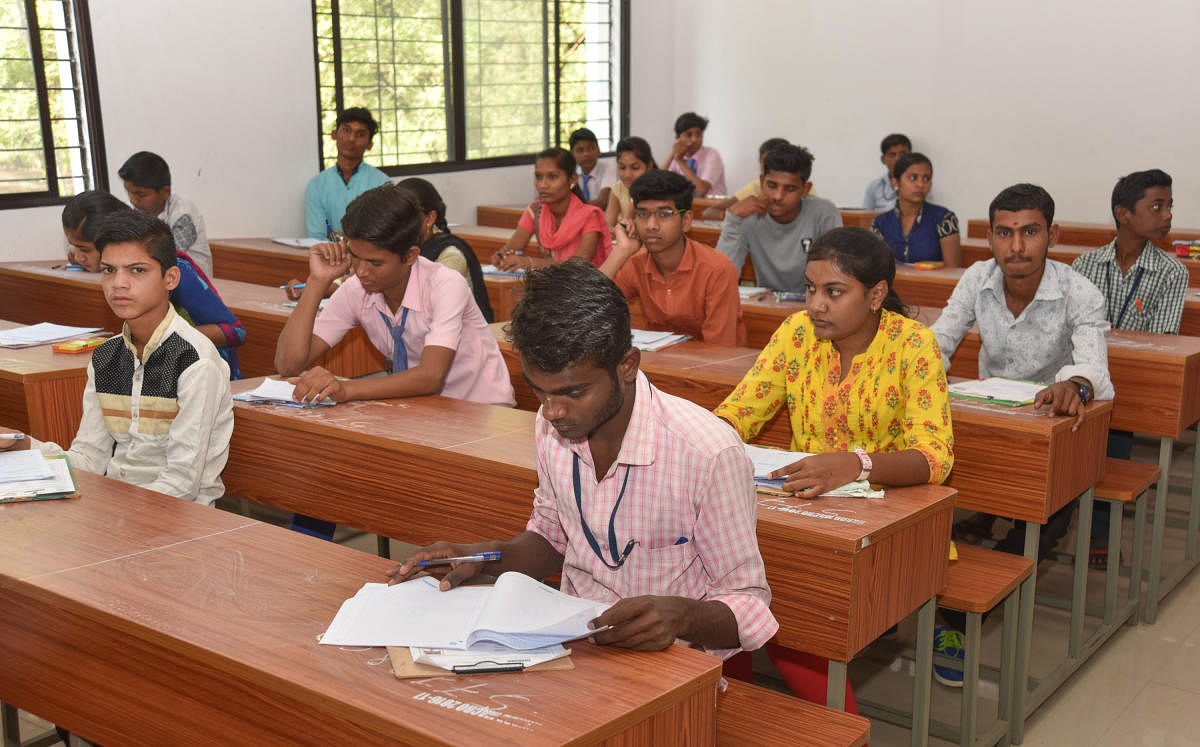
The board exams in India have just been set in motion. In a few weeks from now, a massive flock of students would be reaching Delhi, Mumbai, Bengaluru, Chennai aspiring for admission into a prestigious college or university. But everyone can’t get admission into a quality institute because of existing educational inequalities and a limited number of high-ranking public universities.
It is estimated that globally, the number of enrolments at higher education will go up from 214.1 million in 2015 to 594.1 million by 2040. In India, too, the enrolment into higher education is on the rise and is expected to expand further. Though public expenditure on higher education as a percentage of total public education expenditure has increased in recent years, India is among those countries where public expenditure per higher education student has decreased over the last decade.
It means an increasing number of students would be getting into private institutions, paying more money from their pocket. In countries like Malaysia and Thailand, governments believe there’s a direct correlation between the expansion of graduate education and national economic development. So, those governments considered revising their strategies of higher education to accommodate a more substantial number of students.
After 1990, the number of schools and enrolment figures have gone up with increased awareness and concentrated efforts made by governments, donors, civil society groups and others. Although more focus has been given to primary and elementary education, students aspiring to higher education is also on the upswing. Various sets of schools and boards consisting of elite schools, Kendriya Vidyalayas, Sainik schools, government-aided schools, poorly equipped government primary schools exist. A large number of low-fee private schools are the new addition in this list.
Education is believed to reduce social inequality, but it seems the expansion of the stratified school system and expansion of private universities contributes to strengthening the social divide, not reduce it. In a country like ours, social class has a more profound link with the school a person has graduated from. Since inequalities exist between different types of schools, so do inequalities in educational attainments. Why do students passing out from a particular school have better chances of getting into a particular university/college? How have these forward linkages of a particular school to an exclusive college existed for decades?
Even if we merely see the structure of school education, we have a more significant number of primary schools, then a reduced number of upper primary schools, then even fewer secondary/senior secondary schools and, of course, a limited number of higher education institutes. The gap between enrolment rates and completion rates starts at the primary level and continues up to higher education level.
Is it not surprising that despite the rapid growth of higher education institutions (a large number of private universities/colleges), the participation and completion rates for students from economically underprivileged groups is still low? How can a person with a family of four-five, earning Rs 25,000-30,000 a month, pay a fee of Rs 20-25 lakh for a law course for his/her ward? Thankfully, a good number of government senior secondary schools still exist in the country, catering to underprivileged children and helping them make in-roads into higher education institutes.
The actual difference in the wealth of families gives exposure to divergent objectives to different children. Later on, this economic gap reflects in educational attainments as parents of the affluent class can buy additional learning resources and the child may devote more hours to study without facing financial hardships.
In the 1970s, the sociologist Pierre Bourdieu came up with the theory of social reproduction. He argues that on an average, a child from a working class struggles in the school process but others coming from the middle–class achieve higher academic success. Bourdieu argues that the reason behind the success of children coming from the privileged class is not due to a difference in intelligence levels but due to whether or not their cultural capital (that is, symbolic and non-economic assets) suits the beliefs of the school system.
As schools/colleges differ significantly concerning infrastructure, some teachers and other educational resources, educational attainments also vary. The exponential escalation of private schools/universities and lesser resource allocations linked with poor quality of public education institutions ensures broader educational inequalities and rewards in the country.
Unless we visualise an education system which reduces the deep-rooted educational disparities and can attract a large number of international students and researchers, India will not be perceived as a priority destination for higher education. The quality improvement of our colleges and universities with more opportunities for students belonging to the marginalised communities will undoubtedly translate into a new face for our education system, and that would be a socially responsible higher education system.
In the 21st century, schools and universities should be instrumental in inculcating democratic values and reducing social inequalities. Of course, merit and intelligence would contribute to determining individuals’ educational attainments, but children from the underprivileged classes should not feel obstructed at every level of the education system.
Designing an educational model to reduce social inequality is not an easy task, but efforts can be made to move in that direction. Smaller budgetary allocations to education institutions also create an obstacle in expanding the network of quality universities. A substantial number of sanctioned positions in universities are vacant. Can we become a healthy democracy with unequal educational opportunities? This question can be answered well by those students who would not be admitted to a public university of their choice and could not afford the fee of a private university or college.
(The writer is Adjunct Professor-Education, TISS-Mumbai)